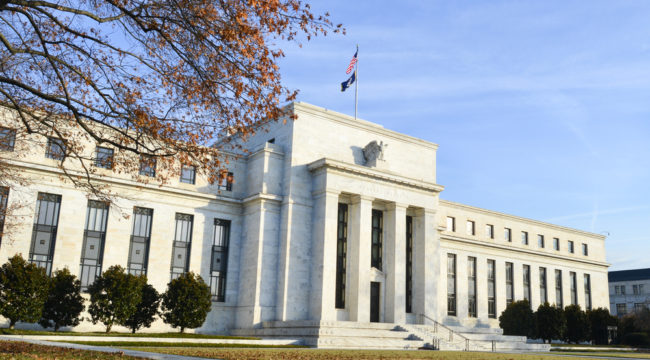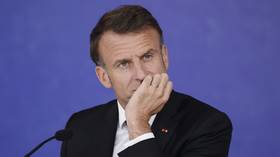The Fed’s Dangerous Inflation Game
by Jim Rickards, Daily Reckoning:

By now you’ve heard that the U.S. economy expanded at an annualized rate of 3.2% in the first quarter of 2019. That was reported by the Commerce Department last Friday morning.
That strong growth coming on top of 4.2% in Q2 2018 and 3.4% in Q3 2018 means that in the past twelve months, the U.S. economy has expanded at about a 3.25% annualized rate. That’s a full point higher than the average growth rate since June 2009 when the expansion began and it’s in line with the 3.22% growth rate of the average expansion since 1980.
It looks as if the “new normal” is back to the old normal of 3% or higher trend growth. Or is it?
The headline growth rate of 3.2% was certainly good news. But, the underlying data was much less encouraging. Most of the growth came from inventory accumulation and government spending (mostly on highway projects). But, business won’t keep building inventories if final demand isn’t there. That’s where the 0.8% growth in personal consumption is troubling.
The consumer didn’t show up for the party in the first quarter.
If they don’t show up soon, that inventory number will fall off a cliff. Likewise, the government spending number looks like a one-time boost; you can’t build the same highway twice. Early signs are that the second quarter is off to a weak start.
Dig deeper and you can see that core PCE (the Fed’s preferred inflation metric) cratered from 1.8% to 1.3%. That’s strong disinflation and dangerously close to outright deflation, which is the Fed’s worst nightmare.
The data just show that the Fed is as far away as ever from its 2% target. But why should it even have 2% as its target?
Common sense says price stability should be zero inflation and zero deflation. A dollar five years from now should have the same purchasing power as a dollar today. Of course, this purchasing power would be “on average,” since some items are always going up or down in price for reasons that have nothing to do with the Fed.
And how you construct the price index matters also. It’s an inexact science, but zero inflation seems like the right target. But the Fed target is 2%, not zero. If that sounds low, it’s not.
Inflation of 2% cuts the purchasing power of a dollar in half in 35 years and in half again in another 35 years. That means in an average lifetime of 70 years, 2% will cause the dollar to 75% of its purchasing power! Just 3% inflation will cut the purchasing power of a dollar by almost 90% in the same average lifetime.
So again, why does the Fed target 2% inflation instead of zero?
The reason is that if a recession hits, the Fed needs to cut interest rates to get the economy out of the recession. If rates and inflation are already zero, there’s nothing to cut and we could be stuck in recession indefinitely.
That was the situation from 2008–2015. The Fed has gradually been raising rates since then so they can cut them in the next recession.
But there’s a problem. The Fed can raise rates all they want, but they can’t produce inflation. Inflation depends on consumer psychology. We have not had much consumer price inflation, but we have had huge asset price inflation. The “inflation” is not in consumer prices; it’s in asset prices. The printed money has to go somewhere. Instead of chasing goods, investors have been chasing yield.
Yale scholar Stephen Roach has pointed out that between 2008 and 2017 the combined balance sheets of the central banks of the U.S., Japan and the eurozone expanded by over $8 trillion, while nominal GDP in those same economies expanded just over $2 trillion.
What happens when you print over $8 trillion in money and only get $2 trillion of growth? What happened to the extra $6 trillion of printed money?
The answer is that it went into assets. Stocks, bonds and real estate have all been pumped up by central bank money printing. The Fed, first under Ben Bernanke and later under Janet Yellen — repeated Alan Greenspan’s blunder from 2005–06.
Greenspan left rates too low for too long and got a monstrous bubble in residential real estate that led the financial world to the brink of total collapse in 2008.
Read More @ DailyReckoning.com
Loading...



